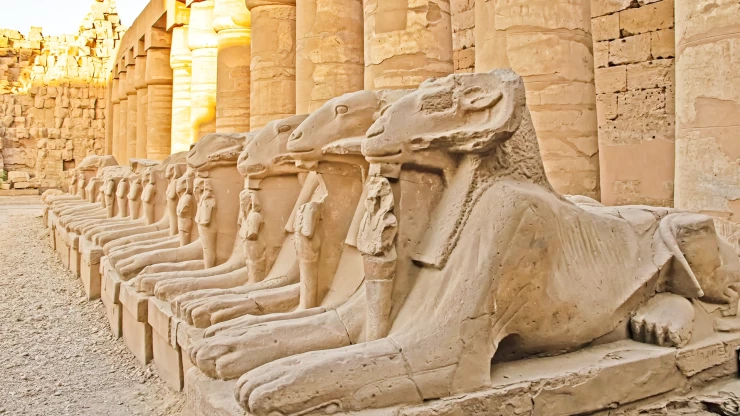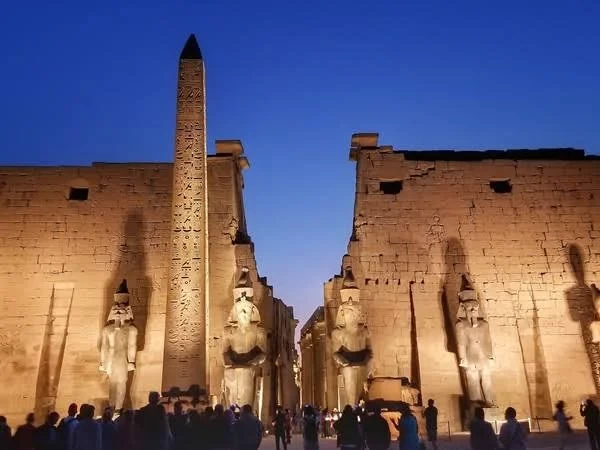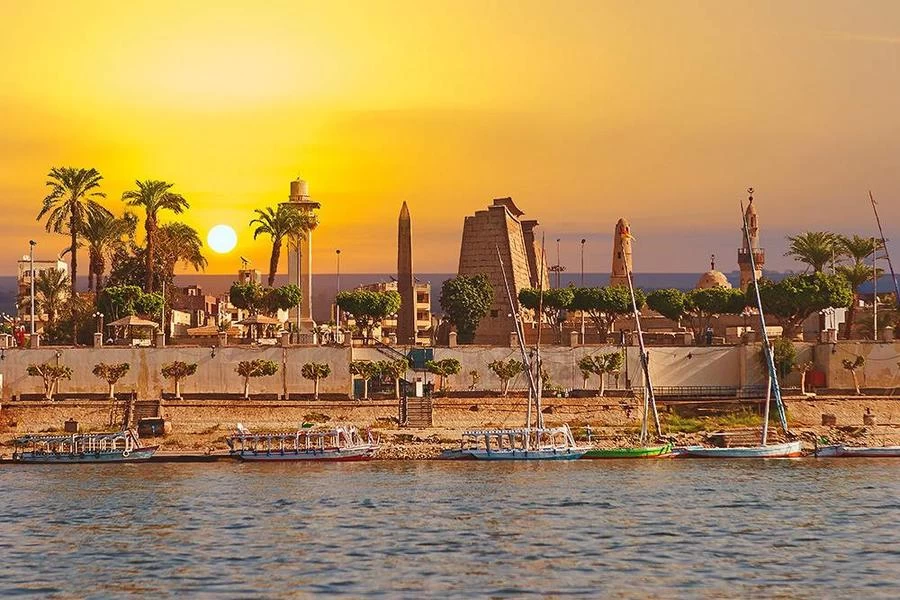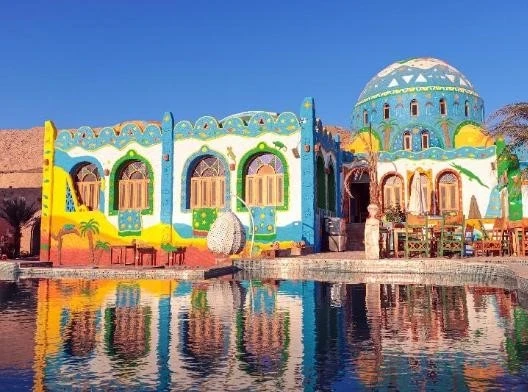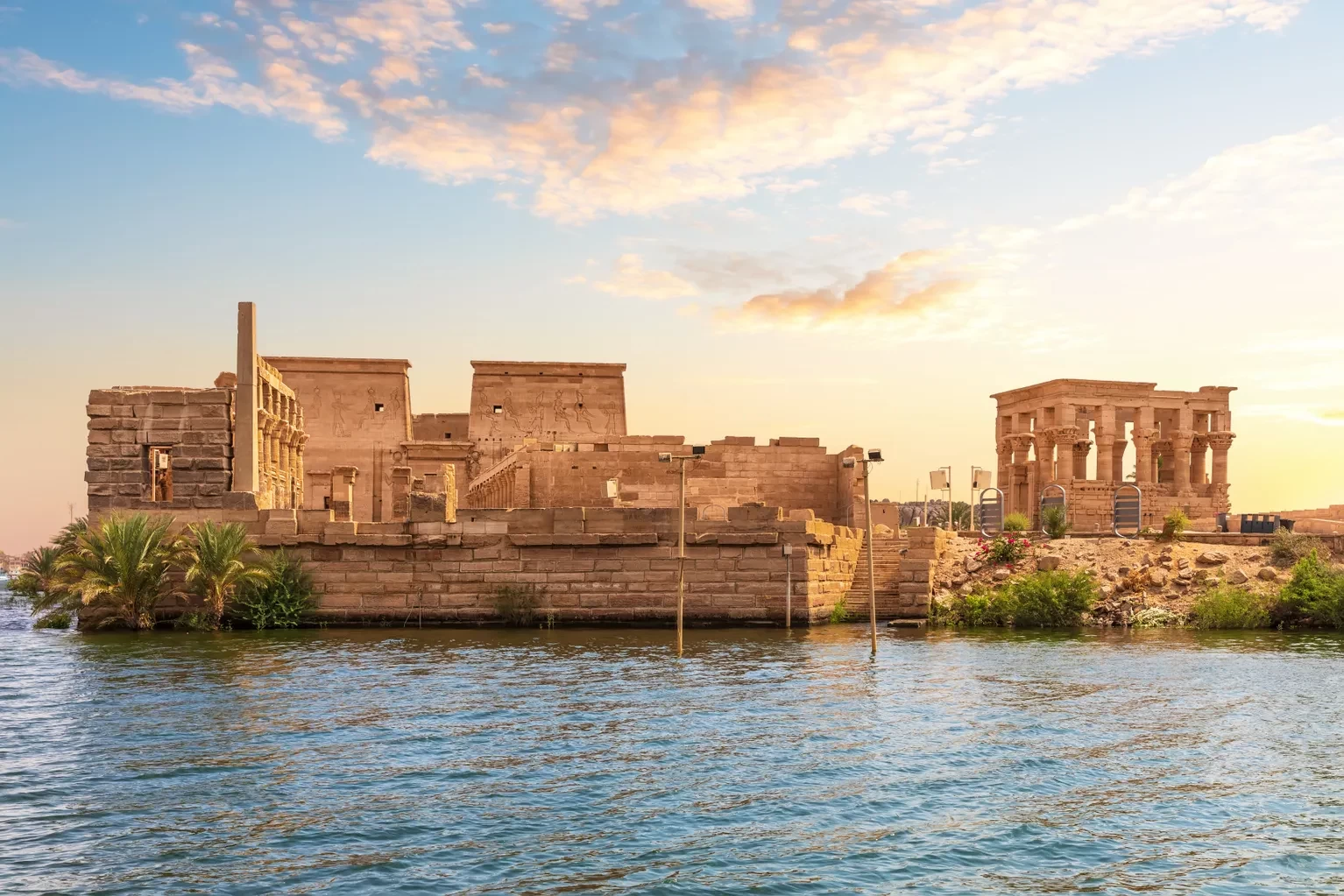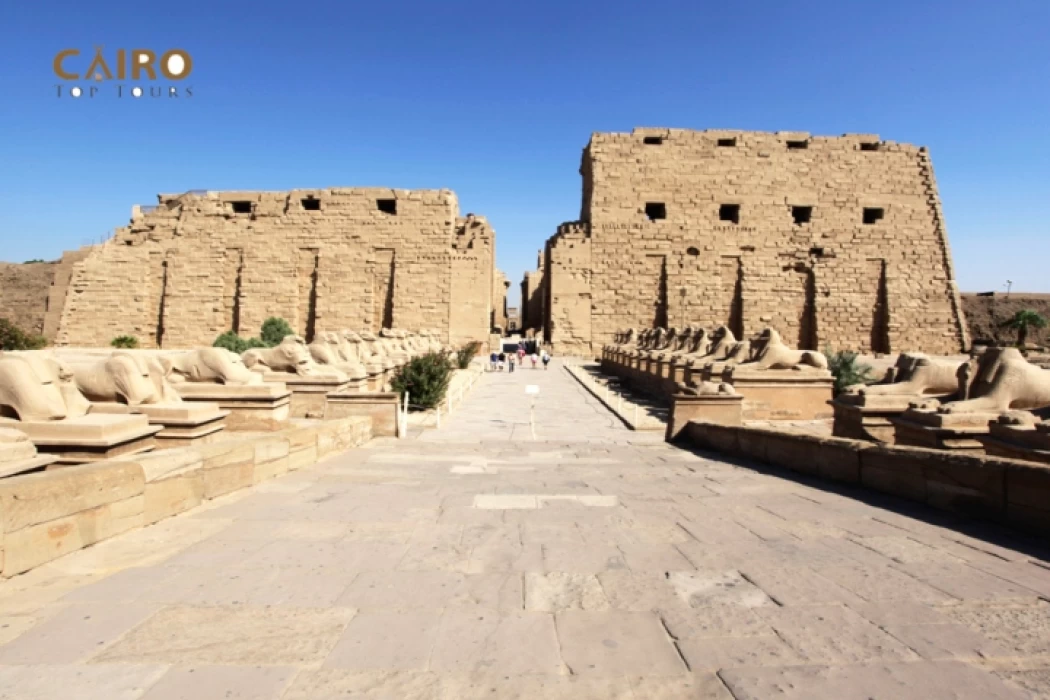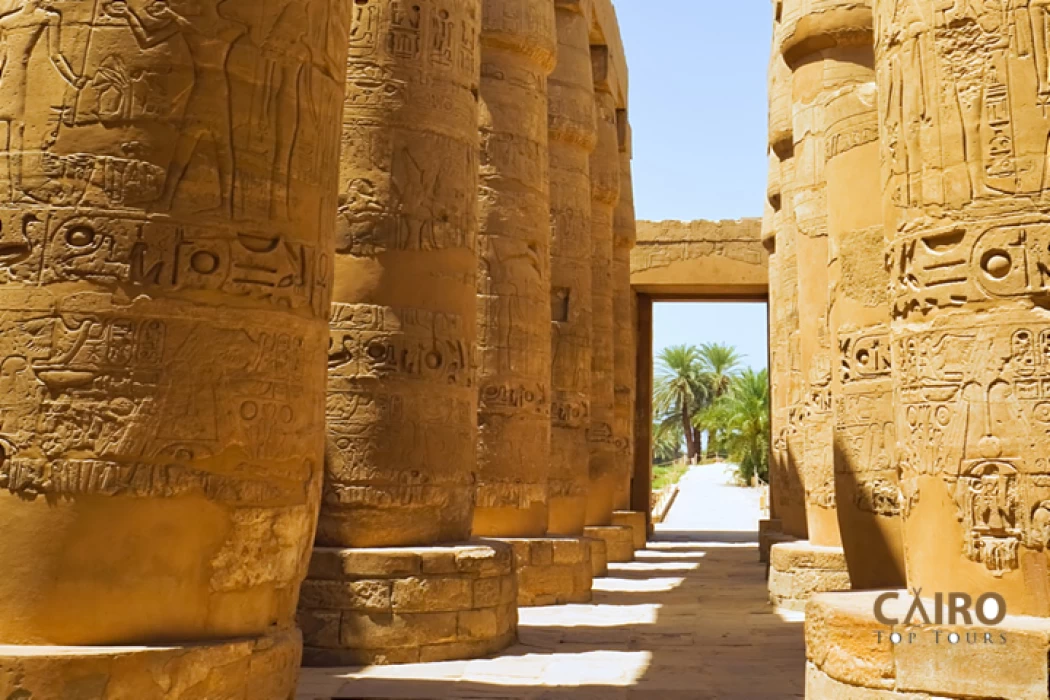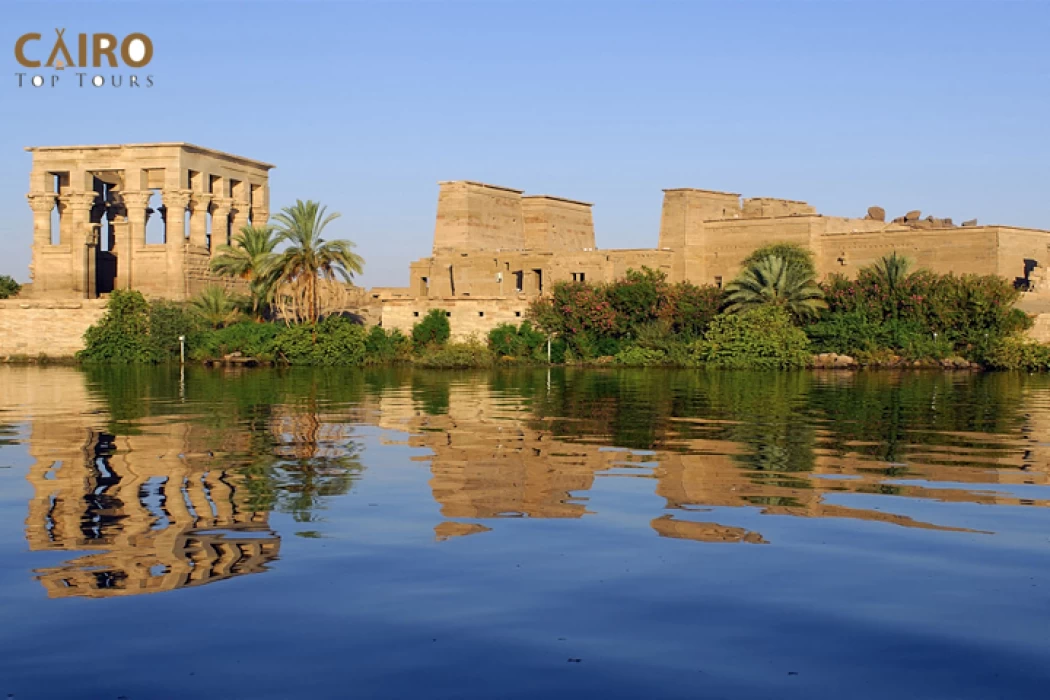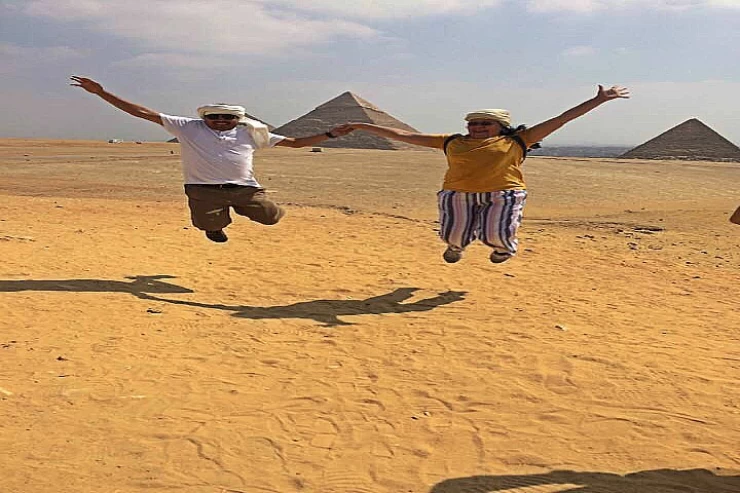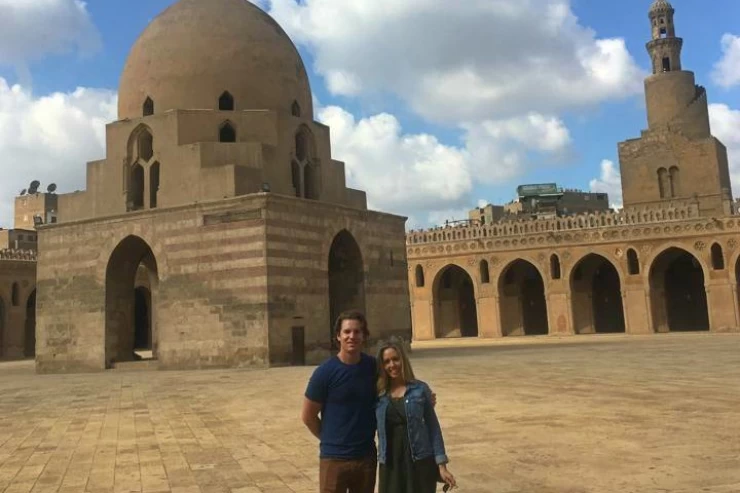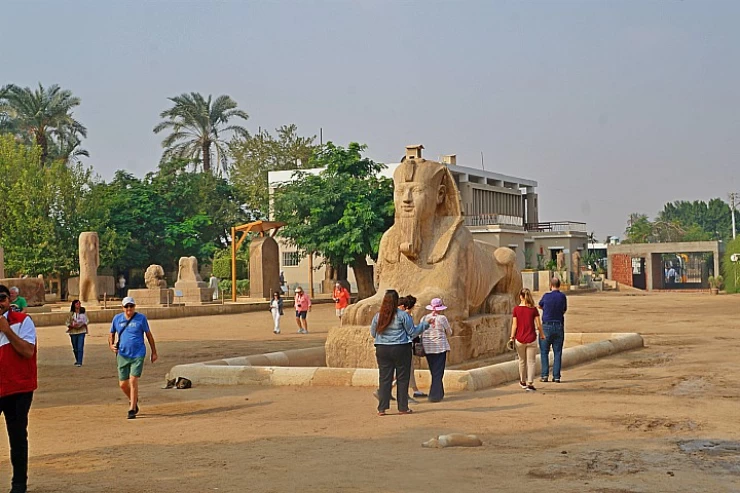Two Days Luxor & Aswan Trip from Cairo
Overview
Two Days Luxor & Aswan tour from Cairo
Enjoy Luxor and Aswan at your own pace as your guide will be with you to help you learn about this fascinating civilization as well as having fun with the locals. Enjoy the charm and beauty of the tourist visits that are organized daily inside the Karnak Temples and Luxor Temple, the most prominent in the east of the governorate, in addition to the famous places in its west, such as the Valley of the Kings and the Bahari Monastery of the great Queen Hatshepsut, which demonstrates the power of women's ambition in ancient Egypt.
You will go to the Luxor Temple and the Karnak Temple, where the god Amun was adored... To see the Colossi of Memnon, the only surviving structure from the Temple of Amenhotep III, you will travel across the Nile to the West Bank...Don't miss the wonderful city of Aswan, close to Luxor. Enjoy a visit to this quaint southern city that is famous for its Pharaonic monuments and huge ancient temples. It is a city rich in culture, history, and natural beauty where you will learn about the beauty of the Nubian culture and their joyful homes.
Two Days Luxor & Aswan tour from Cairo
Enjoy Luxor and Aswan at your own pace as your guide will be with you to help you learn about this fascinating civilization as well as having fun with the locals. Enjoy the charm and beauty of the tourist visits that are organized daily inside the Karnak Temples and Luxor Temple, the most prominent in the east of the governorate, in addition to the famous places in its west, such as the Valley of the Kings and the Bahari Monastery of the great Queen Hatshepsut, which demonstrates the power of women's ambition in ancient Egypt.
You will go to the Luxor Temple and the Karnak Temple, where the god Amun was adored... To see the Colossi of Memnon, the only surviving structure from the Temple of Amenhotep III, you will travel across the Nile to the West Bank...Don't miss the wonderful city of Aswan, close to Luxor. Enjoy a visit to this quaint southern city that is famous for its Pharaonic monuments and huge ancient temples. It is a city rich in culture, history, and natural beauty where you will learn about the beauty of the Nubian culture and their joyful homes.
Inclusion
- Delicious lunch
- All tickets and entrance fees
- Modern, air-conditioned private car
- A guide who speaks English fluently
- Shopping tours (upon request).
- All service fees and taxes are included.
- Transportation to and from the hotel
- Domestic flight from Cairo to Luxor and back.
Exclusion
- Any additional services not covered by the Egypt Day Tours
- Tipping is not included in the tour costs.
- Drinks while eating.
- Since tourist attractions close at 3:00 pm during Ramadan, excursions typically begin an hour early.
- Prices are available for Egypt Easter tours and Egypt Christmas and New Year tours.
Itinerary
Cairo Top Tours provides you with privacy and comfort as we will receive you from in front of your hotel with a private car to the airport, you will have your internal flight tickets that we have provided for you, and upon your arrival in Luxor, we will be waiting for you to receive you and start your tour.
Karnak was called { IPT SWT] which means (the most selected of places). When you arrive, we will begin our tour on the East Bank, seeing the Karnak temples. The Karnak Temples were built from the inside to the outside. It was built with two axes (East to the West) & (North to the South). Your guide will tell you more details and important stories about this temple, its history, the kings who participated in its construction, etc.
Then we move on to the West Bank to start with the Valley of the Kings. The Valley of the Kings got its name because it was buried in a valley of dried-up water on the west bank of the ancient city of Thebes. This moniker is not totally correct, though, because certain high-ranking officials and members of the royal family were buried there.
In the middle of the day the guide will take you to a local restaurant for a special flavor of Luxor's meals. Our tour also includes a trip to the Temple of Hatshepsut, the so-called Bahari Monastery, whose architect was inspired by the design of the Temple of Mentuhotep II.
The last thing on the itinerary before leaving for Aswan are two statues of Memnon. They are what remains of the temple of Amitabhutep III, where we are told that there are statues erected by the pharaoh in this temple, as well as the presence of two questions. You will transfer with our driver to the train station to transfer from Luxor to Aswan by train and upon arrival our representative will be waiting to transfer you to your hotel in Aswan.
In the morning enjoy your breakfast at your hotel after that the tour starts with a licensed guide and we start with a visit to Philae Temple. The ancient Egyptians placed great importance on Philae Island because of its picturesque location, which formed a natural geographical border with Aswan Island... Philae Temple is one of the oldest Nubian temples in ancient Egypt and is often called "the pearl of Nile temples." It is situated in the middle of the timeless Aswan Nile.
Next we turn to the High Dam. Before the construction of dams, the Nile River flooded each year during the late summer months, and water flowed from the bottom of the valley into the catchment basins in East Africa... These floods led to a natural rise in water levels full of nutrients and mineral salts that affected or contributed to the nutrition and fertility of the soil annually. Over the course of the repeated floods in the Nile Delta every year, this made the Nile Valley ideal for agriculture since ancient times. The incomplete obelisk is our last stop before we get to Aswan Airport to catch our flight back to Cairo.
The ancient Egyptians called these massive stone blocks "tekino," which means "sky penetration." As many already know, ancient Egyptian obelisks were four-sided tapered rectangular columns with a pyramid at the top. These columns were placed on pedestals and were usually built to commemorate an individual or an event, or to honor the gods.
Price
| Number of Persons | Prices |
|---|---|
| 1 Person | $920 Per Person |
| 2 - 3 Persons | $750 Per Person |
| 4 - 6 Persons | $710 Per Person |
| 7 - 10 Persons | $680 Per Person |
Start from : 480
Check Availability
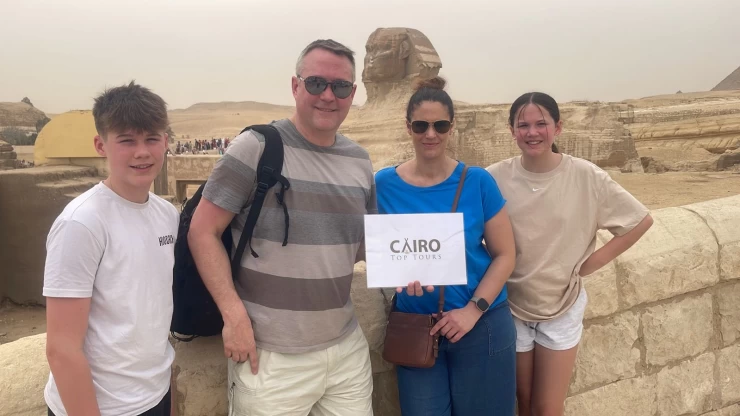
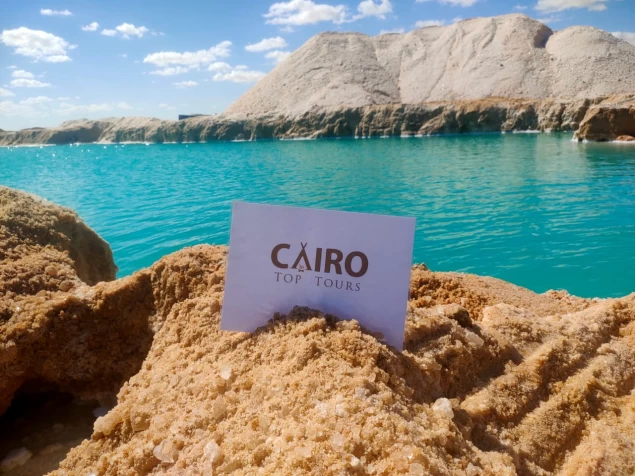
You Also May Like
Looking for something different? check out our related tour now, or simply contact us to tailor made your Egypt tour
Tour of Cairo's Egyptian Museum and Giza Pyramids
Enjoy the Egyptian Museum, which contains the world's largest collection of artefacts from the Egyptian civilisation. Also on this day you will enjoy the largest, most famous and tallest Egyptian pyramids, which are considered one of the most prominent tourist attractions for Egypt, and one of the most important sources of national income in Egypt.
Full-Day Islamic and Coptic Cairo Tour and Egyptian Museum
Visit Coptic Egypt and Islamic Egypt as well as the Egyptian Museum to enjoy Egypt's fascinating history, where your guide will provide you with information about the most important information and legends with deep meaning to the pharaohs. Don't miss out on our special offers tailored just for you.
Full-Day Tour to Giza Pyramids, Memphis, and Sakkara
Enjoy a tour with Cairo Top Tours to the pyramids, Saqqara, and Memphis. Explore the pyramids that reflect the evolution of Egyptian civilization. Built over a long period of time, the pyramids in ancient Egypt show an evolution in the architectural styles and engineering techniques used in construction.
Egypt Cairo Transit Tours
Enjoy a tour from Cairo airport with us. The area of the Giza Pyramids is one of the most famous monuments of Pharaonic Egypt, consisting of 3 pyramids "Cheops, Khafre, and Menkaure", where the first is considered one of the Seven Wonders of the World, and a few steps to the East, there are 3 small piles of stones (20 meters high) representing the pyramids of the Queens.
Reviews of the Middle East and Egypt Vacations
The kind of tours that budget travelers dream of-Many have acknowledged this fact on our social media pages, Trip Advisor, and You Tube videos. They do have professionals who show and explain everything for every location they tour in Egypt and the Holy Land.
Customer feedback samples that were destining to Egypt Tours include low-cost tours of Egypt featuring patently well-versed tour guides to put them through the history of every destination. They are displayed and reflected on Trip Advisors, YouTube videos, and our social media profiles.
It's not a must but definitely advisable and beneficial to learn a couple of day to day basic Arabic words and phrases such as greetings amongst others. If you are planning to dive deeper and explore more than the Popular destinations and famous tourist attractions learning some phrases is surely a smart move.
Aswan, a city along the Nile River in southern Egypt, is rich in history and natural beauty. Here are some of the best attractions to visit in Aswan:
Philae Temple: This beautiful temple complex is dedicated to the goddess Isis and was relocated to its current island location after the construction of the High Dam. The setting on Agilkia Island is stunning, especially when illuminated at night.
Abu Simbel Temples: While Abu Simbel is a bit of a journey from Aswan, it's one of Egypt's most iconic sites. The temples of Ramses II and Nefertari are carved into the mountainside and are a testament to ancient engineering.
Aswan High Dam: Visit the Aswan High Dam, a modern engineering marvel that has helped control the Nile's annual flooding and provides hydroelectric power to the region. You can also see Lake Nasser, one of the largest man-made lakes in the world, from here.
Nubian Village: Take a boat trip to a Nubian village, where you can learn about Nubian culture and enjoy a Nubian meal. The colorful houses and friendly locals make for a memorable visit.
Unfinished Obelisk: This massive obelisk, left unfinished due to a crack in the stone, offers insights into ancient quarrying techniques. It's located in the northern part of Aswan.
Nubian Museum: Located on an island in the Nile, this museum showcases the history and culture of the Nubian people with a collection of artifacts and exhibits.
Elephantine Island: Explore Elephantine Island, known for its archaeological sites, including the ruins of Abu, a once-powerful Pharaonic town. The island also offers scenic views of the Nile.
Kitchener's Island (Botanical Garden): Enjoy a peaceful stroll through the lush gardens on Kitchener's Island, which feature a wide variety of exotic plants and trees.
Tombs of the Nobles: These rock-cut tombs on the west bank of the Nile contain intricate reliefs and paintings, providing insights into the lives of the ancient nobility.
Felluca Ride: Take a traditional felucca boat ride on the Nile, a relaxing way to enjoy the river and the surrounding landscapes.
Sure! Aswan is a place with lots of things to see and do. It's also a good place to start if you want to go on a fun trip to Abu Simbel for a day.
The Mortuary Temple of Hatshepsut, also known as Deir el-Bahri, is a magnificent archaeological site located on the west bank of the Nile River in Luxor, Egypt. It is one of the most iconic and well-preserved temples in Egypt, and its history is closely tied to the powerful female pharaoh Hatshepsut. Here is an overview of the history of the Hatshepsut Temple:
1. Construction in the 15th Century BCE: The construction of the Hatshepsut Temple began during the 15th century BCE, during the reign of Queen Hatshepsut. She was one of the most remarkable pharaohs of ancient Egypt and the second historically confirmed female pharaoh.
2. Architectural Innovation: The temple is renowned for its unique architectural design, which features terraces and colonnades with rows of imposing columns. It was designed by Senenmut, the queen's chief architect, who incorporated innovative elements into the temple's structure.
3. Dedication to the God Amun: The temple is primarily dedicated to the god Amun, who was a principal deity in the Egyptian pantheon. It was built to honor Amun and the divine origin of Hatshepsut's rule.
4. Religious Significance: The temple is adorned with intricate reliefs and inscriptions that depict the divine birth and reign of Hatshepsut. It also features scenes of the queen's successful military campaigns and her extensive trading expeditions to Punt (modern-day Somalia).
5. Ongoing Restoration and Exploration: Over the centuries, the temple fell into disrepair, and sand buried many of its structures. In the 19th and 20th centuries, extensive restoration efforts were undertaken to uncover and preserve the temple's remarkable features.
6. UNESCO World Heritage Site: The Hatshepsut Temple is now a UNESCO World Heritage Site and an important part of the larger Theban Necropolis, which includes other ancient Egyptian tombs and temples.
7. Decline and Vandalism: After the death of Hatshepsut, her successor, Thutmose III, tried to erase her legacy from history, and some of the temple's inscriptions were vandalized or removed.
Yes, you can visit religious sites in Cairo, and there are some dress code requirements to be aware of, especially when visiting mosques and churches.
1-Mosques
2-Coptic Churches
Yes, visiting Philae Temple at night is a popular option for tourists. The temple, dedicated to the goddess Isis, is located on an island in the Nile River near Aswan. The site is illuminated during special sound and light shows held in the evening, providing a magical atmosphere and a different perspective on the temple's ancient history.
The sound and light show at Philae Temple typically includes narrations, music, and light effects that showcase the history and legends associated with the temple and its deities. Visitors get to experience the temple grounds in a unique and captivating way as the lights accentuate the architecture and the stories are narrated against the backdrop of the ancient ruins.


Cairo Top Tours Partners
Check out our partners
